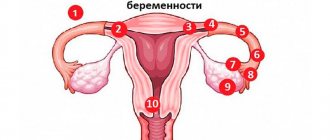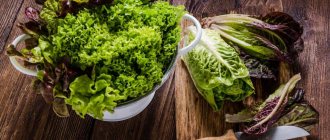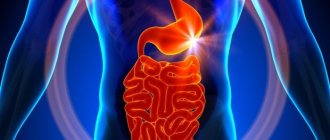The most common complaint a child makes regarding his or her health is abdominal pain. This complaint can be heard from a child of any age - from an infant to a teenager. And the younger the child, the more difficult it is for him to explain to the parent “where it hurts” and to specify the pain in the abdomen. The nature and causes of such pain can be very different, so you should often seek help from a doctor. And in some cases, call emergency help. Sometimes this complaint can be a certain “excuse” when the child does not like the food and he does not want to eat it. Therefore, it is important to be able to distinguish the baby’s true pain from false ones. At home, you can determine the degree and nature of such pain. An obvious rule for moms, dads, grandparents is not to wait until the pain becomes excruciating and call the doctors on time!
Causes of pain in a child
Acute abdominal pain:
- inflammatory causes: gastroenteritis;
- appendicitis;
- mesenteric lymphadenitis;
- peritonitis;
- hepatitis;
- pancreatitis;
- intussusception, volvulus;
Chronic abdominal pain:
- colic of three-month-old children;
- gastroesophageal reflux;
- chronic constipation;
- inflammatory bowel diseases;
- chronic infections, such as parasites;
- peptic ulcer;
- tumors in the abdominal cavity;
- psychosomatic pain (functional abdominal pain).
When the cause of pain is acute appendicitis (inflammation of the appendix), the pain is usually localized in the navel area. Sometimes the pain extends to the lower abdomen (the abdomen may be soft to the touch). As a rule, in such cases the child’s temperature rises and vomiting begins. If your child has symptoms of appendicitis, contact your pediatrician immediately. In such a situation, delay can result in serious complications.
Sometimes the cause of abdominal pain can be emotional stress associated with an unfavorable psychological climate at home or at school. For a school-age child, such stress is a common occurrence. The cause of stress can be divorce or other family troubles, problems in relationships with peers, with teachers. Some children experience abdominal pain in the morning, and this is most often associated with nervous tension before the start of the school day. Such pains usually disappear within 24 hours; If necessary, allow the child to stay at home. Try to identify the main cause of emotional stress and solve the problem as soon as possible.
Worms
The causes of infection can be:
- contact with contaminated water or sand;
- eating unwashed vegetables or fruits;
- eating food with dirty hands;
- poor sanitary and hygienic living conditions;
- contact with pets;
- weakened immunity.
Some parasites can stay in a child’s body for years and become active only against the background of weakened immunity. One of the first signs of helminthic infestation is nervous system disorders. The baby becomes irritable, restless, and sleep is disturbed.
With weight loss, there is an increased appetite. Abdominal pain radiates to the right hypochondrium. Children may also complain of nausea, dizziness, headaches, constipation, or diarrhea. In a comprehensive general blood test, an increased level of eosinophils is observed.
Enterobiasis - infection with pinworms - begins with itching in the anorectal area at night. This leads to restless sleep or even insomnia. At night you can hear the grinding of teeth.
The fight against worms takes place in several stages.
To begin with, the body prepares for cleansing with the help of sorbents and antihistamines. Next, anthelmintic therapy is prescribed. You can cleanse the body with a cleansing enema and choleretic agents.
The following traditional medicines will help get rid of parasites:
- pumpkin seeds;
- flaxseed or hemp oil;
- soda enema. You can also cleanse the intestines using a garlic enema with the addition of milk;
- Birch tar;
- tansy infusion;
- infusion and enemas based on celandine and wormwood.
Symptoms and signs of pain in a child
In young children, the equivalent of abdominal pain is screaming, crying, restlessness, refusal to eat, a crouched posture with the legs brought to the stomach, impulsive movements of the legs (“kneeling”).
In preschool and primary school age, abdominal pain often does not have a clear localization; most often, regardless of punktum fiksum, the child localizes pain in the peri-umbilical region.
Abdominal pain in children can be caused by both diseases of the abdominal organs and diseases of other organs and systems. is divided into acute and recurrent .
When a child develops acute pain, first of all, it is necessary to exclude a number of diseases united by the concept of “acute pain” . Such diseases include acute pathology of the abdominal organs, in which emergency surgical care is vital: acute appendicitis, perforated ulcer of the stomach or intestines, peritonitis, etc. Along with intense pain, an “acute abdomen” is characterized by a sharp deterioration in well-being, dry mouth, tachycardia , possible increase in body temperature.
During the examination, you should check for symptoms of peritoneal irritation: tension of the anterior abdominal wall, Shchetkin-Blumerg, Rovzing symptoms, etc. In case of doubtful results, an urgent consultation with a surgeon is necessary; in case of positive symptoms, hospitalization in a surgical hospital.
Sudden onset of paroxysmal abdominal pain, alternating with periods of relative well-being, gradually weakening against the background of the child’s deteriorating well-being, suggests acute intestinal obstruction . It is necessary to find out whether the onset of pain was preceded by any dietary error. When examining a child, you should pay attention to the presence of asymmetry of the abdomen; sometimes it is possible to palpate a painful cylindrical formation in the abdominal cavity; it is advisable to conduct a digital rectal examination. The discovery of blood on the glove after this test allows the diagnosis of intussusception . The child should be urgently hospitalized in a surgical hospital.
The appearance of intense paroxysmal abdominal pain in a child in combination with symptoms of acute intestinal obstruction and the discovery during examination of a painful tense protrusion in the groin area or in boys in the scrotal area allows us to establish a diagnosis of strangulated inguinal hernia . The child must be urgently admitted to the surgical department.
If a child experiences acute abdominal pain due to diarrhea, regurgitation, vomiting, fever and, often, signs of dehydration, one can think about the development of an acute intestinal infection (acute enterocolitis or gastroenterocolitis). It is necessary to conduct a scatological and bacteriological examination of stool; if oral rehydration is impossible or if there is degree P-III dehydration, the child should be hospitalized in an infectious diseases hospital.
If a child develops acute abdominal pain, along with fever, vomiting, upset stool, skin rashes, and joint pain, yersiniosis or pseudotuberculosis . A bacteriological examination of feces, vomit, as well as a serological examination of blood serum is necessary in the 1st and 3rd weeks of the disease.
Children in the first months of life often experience attacks of anxiety, manifested by screaming, straining, and redness of the face. During an attack, regurgitation, bloating and tension in the abdominal muscles are noted. infant colic can be established .
The causes of colic are considered to be spasms of different parts of the stomach and intestines against the background of perinatal encephalopathy, hyperexcitability syndrome, nutritional errors, food allergies, and inadequate child care. It is necessary to analyze with the parents the features of feeding and raising the child, perform a coprogram and stool culture for dysbacteriosis, and consult the child with a neurologist and gastroenterologist.
Acute abdominal pain sometimes occurs in children with the flu . It is necessary to take into account the epidemiological situation - find out from parents whether there are patients in the children's team and the child's home environment. When examining a child, you should pay attention to the moderate severity of catarrhal phenomena in the nasopharynx, high body temperature, intoxication, and sometimes arthralgia and hemorrhage. A child with this form of influenza must be closely monitored and sometimes hospitalized.
In case of acute abdominal pain in combination with a high rise in body temperature, chills, sore throat when swallowing, signs of atypical sore throat, enlarged lymph nodes, difficulty in nasal breathing, on the 3-4th day of illness, enlargement of the liver and spleen, you should think about an infectious disease mononucleosis .
A blood test can help verify the diagnosis - an increase in the number of monocytes, plasma cells, and the appearance of atypical monoplasms are typical; immunochemical (ELISA) and molecular biological (PCR, RT-PCR) diagnostic methods. Hospitalization is advisable in severe cases of the disease.
For pain in the right hypochondrium, combined with nausea and vomiting, it is necessary to exclude viral hepatitis . Parents should clarify the epidemiological history and find out the color of the child’s stool and urine - light stools and dark urine are typical. When examining, pay attention to the color of the skin and mucous membranes, the presence of enlargement and tenderness of the liver. If a child has icterus of the sclera and skin or the examination reveals a significant (2 or more times) increase in the activity of transaminases in the blood serum (ALT, AST), the child must be sent to the infectious diseases department.
Abdominal pain in combination with high body temperature and dysuric symptoms (frequent urination, anxiety when urinating) may indicate a urinary tract infection, pyelonephritis or interstitial nephritis . It is necessary to prescribe a general urine test and urine culture for flora, ultrasound of the kidneys and bladder. In case of pronounced changes in the urinary syndrome, significant intoxication, hospitalization is possible. With acute abdominal pain in combination with the appearance of edema, decreased urination, and cloudy urine, glomerulonephritis or lipoid nephrosis . It is necessary to do a general urine test, organize a record of the liquid drunk and excreted by the child, daily weighing, monitoring blood pressure, and in the case of oliguria, severe edema, high proteinuria or hematuria, hospitalize the child in the somatic (preferably nephrological) department of the hospital.
The presence of cough, rapid breathing, and elevated body temperature in a child with abdominal pain suggests acute pleuropneumonia . A thorough physical examination of the lungs, a complete blood count, and a chest x-ray are necessary. If there is severe respiratory failure or pleurisy, the child must be hospitalized.
Acute abdominal pain in a febrile child, in whom examination reveals tachycardia, arrhythmia, expansion of the boundaries of cardiac dullness, dullness of heart sounds, murmur in the heart area, may be a symptom of acute pericarditis . It is necessary to give the child an ECG, X-ray, echocardiography, general blood test, determine C-reactive protein and sialic acids in the blood, consult a cardiologist, and if the diagnosis is confirmed, hospitalize him in the somatic (cardiology) department.
Acute abdominal pain in a child in combination with symmetrical papulo-hemorrhagic rashes on the skin (usually on the legs and feet), increased body temperature, and sometimes with arthritis suggest hemorrhagic vasculitis . For differential diagnostic purposes, it is advisable to check the child’s endothelial tests (“pinch”, “tourniquet”, etc.), do a blood test to determine platelets, duration of bleeding and clotting. If the process is highly active, the child should be sent to a somatic hospital.
The appearance in a patient with acute abdominal pain of a strong smell of acetone from the mouth, progressive weakness, thirst, and frequent urination (plyuria) gives reason to suspect the onset of diabetes mellitus . It is necessary to examine the sugar content in urine and blood. In case of hyperglycemia and glycosuria, the child should be urgently hospitalized in the endocrinology department.
Repeated episodes of abdominal pain and vomiting in a child with gradually increasing muscle weakness, thirst, polyuria, and anorexia can occur with chronic adrenal insufficiency . During examination, you should pay attention to the presence of hyperpigmentation of the skin, especially in folds and friction areas of clothing. It is advisable to analyze the pedigree. Detection of hyperkalemia and hyponatremia, decreased excretion of 17-OX and 17-KS in daily urine, and ultrasound of the adrenal glands are of diagnostic importance. Consultation with an endocrinologist is necessary.
In a child with recurrent abdominal pain, the presence of increased excitability, accelerated intellectual development, episodic arthralgia, and periodic bouts of vomiting gives reason to think about neuroarthritic diathesis . It is advisable to clarify family history (urolithiasis, radiculitis, gout), assess the level of uric acid in the blood serum and urate in the urine, and during the period of vomiting, test the urine for acetone and conduct a bacteriological study of vomit and feces.
If a child with recurrent abdominal pain has pallor of the skin and mucous membranes, enlarged lymph nodes, painful bones, hemorrhagic manifestations, leukemia or lymphogranulomatosis . It is necessary to do a blood test, including determining the number of platelets and reticulocytes. It is advisable to perform an ultrasound of the liver, spleen, para-aortic lymph nodes, and a chest x-ray (mediastinum). A study of the myelogram or the morphology of the lymph node biopsy may be required - consultation with a hematologist is necessary, and if the diagnosis is probable, hospitalization in the hematology department. Recurrent abdominal pain in combination with heartburn and belching suggests gastroesophageal reflux disease or acute esophagitis . Esophagogastroscopy, prolonged pH-metry or impedance measurement of the esophagus, and consultation with a gastroenterologist are required.
The presence of episodic non-stereotypical recurrent pain in the upper abdomen, provoked by various triggers, in a child with symptoms of autonomic dysfunction allows us to suspect functional dyspepsia . If abdominal pain is associated with food intake, the presence of periods of exacerbations, aggravated heredity and concomitant dyspeptic symptoms, one can assume gastritis , gastroduodenitis , peptic ulcer of the stomach and duodenum . An FGDS is required to study the morphology of the mucous membrane of the stomach and duodenum, with the determination of Helicobacter pylori, and study the secretory and motor function of the stomach (long-term pH-metry, impedance measurement). Consultation with a gastroenterologist is advisable; in complicated cases, hospitalization.
Episodes of abdominal pain that occur along with nausea, rumbling in the abdomen and loose stools after consuming dairy products suggest lactase deficiency . To confirm the diagnosis, a stool pH test, an elimination-provocative test, and a lactose tolerance test are used.
With recurrent pain in the right hypochondrium associated with eating fried, fatty foods, sometimes accompanied by occasional discolored stools, biliary tract dysfunction , and in the presence of periods of exacerbations and persistent pain, chronic cholecystitis . It is necessary to clarify the presence of a family history; during examination, pay attention to the color of the skin and sclera, the size and characteristics of the liver, and cystic symptoms. An ultrasound examination of the liver and gallbladder should be prescribed, the coprogram and signs of activity of the inflammatory process should be assessed, a study of the composition of bile should be carried out, and giardiasis . If a child detects icterus of the integument, “liver signs” on the skin, or an enlarged and thickened liver, one should think about chronic hepatitis or cirrhosis of the liver . It is necessary to additionally determine the activity of transaminases, bilirubin, protein fractions, alkaline phosphatase, markers of hepatitis viruses in the blood serum and consult the child with an infectious disease specialist and gastroenterologist.
With girdle or left hypochondrium pain, combined with unstable “fatty” stools, repeated vomiting, bloating, one can think of acute or exacerbation of chronic pancreatitis , reactive pancreatitis . The diagnosis can be confirmed using a coprogram (type I steatorrhea), ultrasound of the pancreas, as well as by detecting an increase in amylase in the urine or amylase, lipase and trypsin in the blood serum. Consultation with a gastroenterologist is necessary and, depending on the activity of the disease, hospitalization.
Recurrent abdominal pain in a child with growth retardation, underweight, and polyfecal matter suggests malabsorption. It is necessary to evaluate the coprogram and a general blood test. A study of sweat electrolytes will help rule out cystic fibrosis . Determination of anti-gluten, anti-endomysial antibodies and antibodies to tissue transglutaminase will make it possible to resolve the issue of the presence of celiac disease preliminary, and examination of a biopsy of the small intestinal mucosa - definitively.
Recurrent abdominal pain may be caused by food allergies. In this case, a burdened family history, the presence of other manifestations of atopy, and the connection of pain with certain foods are diagnostically significant. In terms of confirming the diagnosis - a general blood test (eosinophilia), a study of general and specific immunoglobulins E, and prick tests. It is possible to conduct an elimination-provocative test. It is advisable to consult an allergist.
Recurrent abdominal pain that goes away after defecation, accompanied by flatulence, rumbling in the abdomen, diarrhea with mucus and blood in the stool, as well as an increase in body temperature, suggests Crohn's disease , ulcerative colitis . It is necessary to conduct a general blood test, scatological and bacteriological examination of feces, sigmoidoscopy, and consult the child with a gastroenterologist. In children with unstable stools, episodic vomiting, and loss of appetite, repeated abdominal pain is often caused by intestinal parasitosis . It is advisable to conduct a three-time stool test for eggs of worms and protozoa, a scraping for enterobiasis, and a serological blood test for giardiasis. If the results of a helminthological examination are negative, intestinal dysbiosis . A scatological and bacteriological examination of stool should be carried out and an attempt should be made to establish the cause of dysbiosis.
Repeated abdominal pain, often of a spastic nature, combined with defecation disorder, induced mainly by psycho-emotional factors, suggests irritable bowel syndrome . Verification of the diagnosis involves, along with the identification of autonomic dysfunction and psycho-emotional instability, the exclusion of organic pathology of the gastrointestinal tract.
Tapeworms:
The most dangerous are pork and bovine tapeworms, which reach a length of 1.5-2 m and 4-10 m, respectively. Tapeis have an intermediate host, a pig or a cow, in whose muscle tissue the larvae - Finns - mature. Humans become infected by consuming meat from infected animals.
The larva is swallowed and begins to develop into the adult form in the human small intestine. In this case, the child experiences general symptoms of poisoning: weakness, abdominal pain, indigestion, exhaustion, increased nervous excitability. Tapeworm infection can be recognized by the appearance of segments in the stool - segments of its body that look like yellowish-white rectangles measuring 10-12 x 5-6 mm in the case of pork and 20-30 x 12 mm in the case of bovine tapeworm. The segments of the bovine tapeworm are capable of crawling out of the anus on their own without the act of defecation.
You should consult your child with a doctor to prescribe medication. Traditional medicine offers the following recipes:
Eat about 100 g of dry, peeled pumpkin seeds on an empty stomach. After 1 hour, drink in small sips a glass of milk in which the head of garlic has been boiled. Then, after 30 minutes, drink a strong laxative (Glauber’s salt or bitter salt, 1 g per 1 year of the child’s life), and after 1.5-2 hours give an enema of warm water in which the head of garlic was boiled;
Take about 60 g of dry crushed peeled pumpkin seeds, the same amount of cocoa powder, a little sugar. Mix and add a few drops of boiled water. Grind all the ingredients until a dough is formed, from which you can make 20 cakes. You can sprinkle them with sugar on top.
On the first day of treatment, you should fast and try not to drink anything. On the second day in the morning, give 1.5-2 tablespoons of castor oil to drink and start eating cakes, one every 10 minutes. After the tapeworm appears in the stool, you need to make sure that its head comes out. If it does not come out, then the treatment should be repeated after 2-3 months.
During treatment, measures must be taken to prevent vomiting so that the tapeworm eggs do not enter the stomach. The child must be provided with peace. You can place a warm heating pad on the pit of your stomach. Parasites and their fragments released during treatment must be neutralized by pouring boiling water in a closed container.
My child has a lot of stomach pain. When to start sounding the alarm?
Babies, and often one- and two-year-olds, cannot tell that their stomach hurts, and determining that a child needs to see a doctor will require some detective work. The following signs and symptoms should be taken seriously and may mean your baby needs medical attention.
Call your doctor or make an appointment right away if you have any of the following.
- The child looks unhealthy.
- His stomach hurts a lot (especially on the lower right side).
- The pain intensifies.
- The pain does not stop for more than two hours.
- The stomach is swollen or painful to touch.
- The child does not want to eat his favorite food.
- Continuous vomiting.
- Continuous diarrhea.
- The stool is bloody, dark, or looks like grape jelly.
- It hurts the baby when he jumps (this, of course, applies to older children, not babies).
- Cannot walk or walks bent over (also applies to older children).
Problem Frequency
You need to understand that the “belly” is a rather vast area. This word can designate the entire part of the body extending from:
- lower chest;
- to the human groin area.
Unfortunately, the problem of painful sensations in the abdomen in children arises quite often, since their body is not yet a formed stable system, but is just beginning to develop. As a result, external influences, as well as internal factors that do not have much influence on an adult, can cause serious harm to the child.
The causes of pain in the abdominal area in children may vary and include:
- minor, easy to fix on your own;
- serious, requiring medical attention.
Parents must be attentive to their child’s complaints of pain.
Parents must be attentive to their child’s complaints of painful sensations, since sometimes the cause of their occurrence turns out to be much more dangerous than you initially thought.
How can you tell if abdominal pain is a sign of appendicitis?
Appendicitis can be difficult to identify even for doctors, especially in young children, and this is one of the reasons why, if a child has a stomach ache and at least one of these symptoms is observed, you need to immediately find out what is wrong. Typical signs and symptoms of appendicitis: pain begins in the navel and moves to the lower right abdomen after a few hours. If you press on this area, the child cries or complains that it hurts. In addition, the child may have a fever, vomiting, or refuse his favorite food. If you ask a child to jump, another symptom may appear: with appendicitis, most children (and adults) find it painful to jump.
Young children may not always show the expected signs and symptoms, especially if they are under two years of age. Call the doctor if your child has any of the symptoms listed in question 45 on the previous page or if you are concerned that it may be appendicitis. The doctor will examine your baby and may order some tests, including an ultrasound or CT scan to look at the appendix.
Pancreatitis
Inflammation of the pancreas provokes severe abdominal pain. The following reasons can lead to the development of pancreatitis: poisoning, overeating, dietary errors, in particular, abuse of fatty and fried foods, helminthic infestations, vaccinations.
The acute process is characterized by the appearance of the following symptoms:
- lack of appetite;
- attack of pain;
- bloating;
- nausea and vomiting;
- diarrhea;
- temperature increase.
Children with acute pancreatitis are treated in an inpatient setting. To combat pancreatitis, conservative treatment is carried out, aimed at combating clinical symptoms and eliminating provoking factors.
Colic most often occurs in newborns. This is due to the immaturity of the digestive tract and increased gas formation. Dysbacteriosis, lactose intolerance, swallowing air, migraine - all this can cause the development of colic. Colic manifests itself in the form of the following symptoms:
- prolonged loud crying, the child is simply impossible to calm down. Most often, the attack begins at the same time, usually in the evening;
- convulsive raising of the knees to the stomach;
- tense, bloated stomach;
- regurgitation;
- red face;
- refusal to eat.
Is it possible to alleviate the baby's condition? Yes, to do this, fifteen minutes after feeding, massage your tummy clockwise. Bend his legs at the knees and press him to his stomach, this will help eliminate flatulence.
Try to calm the child down, take him in your hand. It is important to ensure that the baby latches onto the breast correctly. During attacks, it is better to feed the baby from a bottle. Sometimes the occurrence of colic can be influenced by the unstable emotional health of the mother. If it cannot be stabilized, then it is better to consult a psychotherapist.
The following medications will help eliminate the pathological process:
- probiotics: Linex, Lactobacterin;
- carminatives: Espumisan, Smecta;
- sedatives: Pantogam, Phenibut. Mothers with emotional lability (instability) can advise motherwort or valerian;
- for dysbacteriosis, Acylact, Bifikol are prescribed;
- Enzymatic preparations will help improve stomach function: Lactazar, Creon.
Traditional medicine will also help to cope with the pathological process. Take fennel fruits and pour boiling water over them at the rate that one tablespoon of raw material contains a glass of water. The product should sit for an hour.
The famous dill water will also help get rid of colic. Dill seeds are poured with boiling water and left for one and a half hours. Another good anise-based remedy. Half a teaspoon of crushed seeds is poured into 500 ml of water.
Then the product is brought to a boil and boiled over medium heat for ten minutes. Next, the broth is filtered and, after it has cooled, placed in the refrigerator. Give anise water three drops at a time using a pipette.
The causes of infection can be:
- contact with contaminated water or sand;
- eating unwashed vegetables or fruits;
- eating food with dirty hands;
- poor sanitary and hygienic living conditions;
- contact with pets;
- weakened immunity.
Monitoring the patient
Pain:
- stakes and cob-shaped or permanent;
- Times of Day;
- pain that interrupts sleep;
- connection with food intake;
- duration, localization.
General condition: satisfactory - unsatisfactory - severe, apathetic, the child cannot be distracted. Nausea, vomiting, diarrhea; time of last bowel movement. Abdomen: protrudes, swollen; visible peristalsis. Fever, cardiovascular symptoms (pallor, tachycardia, cold sweat).
Gait (eg, limping with appendicitis) and posture (eg, relaxed, flexed). Weight loss?









